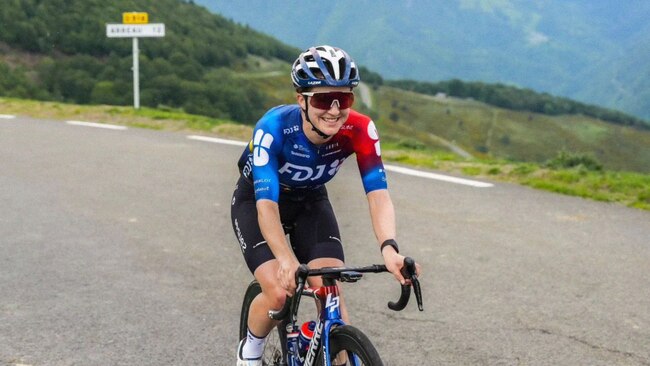Why Tour de France Femme proves women's racing is no side act
Power to the girls

Fitness
Don't miss out on the headlines from Fitness. Followed categories will be added to My News.
As the Tour de France Femmes kicks off, we speak to one of Australia’s most successful cyclists about training, mental toughness and so much more.
Grace Brown wasn’t always a cyclist. Her love for sport started in running, and only transitioned to the bike eight years ago.
In this short but transformative time, Brown has become one of Australia’s most promising road athletes, even adding Olympian to her resume after competing in the 2020 Tokyo Games.
Here, Brown chats with Body+Soul about perseverance, bravery and why women’s sport is far more than just a hobby.
Like what you see? Sign up to our bodyandsoul.com.au newsletter for more stories like this.
You’re competing in your second Tour de France Femmes this month. What led you to cycling?
Growing up, I was a runner competing in cross country and track. By the time I got to university I was getting a lot of injuries from running, so my dad suggested I try cycling – and I fell in love with it. What surprised me about cycling is that it’s a skillful and very challenging sport. There’s a lot of strategy and it requires a ton of focus to be shoulder-to-shoulder with other riders and taking corners fast.
Racing takes bravery. Can you share some of your scariest moments?
I got into cycling to escape injury, but I’ve had far worse ones in this sport. I had a crash in Norway where I broke several ribs and one of them punctured my lung. Half my lung collapsed on one side while I was on the track and I had the feeling of not being able to breathe properly. It was terrifying.
Do you have a strategy mapped out when you’re going into a race, or do you wait and see how it unfolds?
I like to identify points [beforehand] where I can ‘attack’. That’s where you give an all-out effort in the hope of breaking away from the pack, and creating enough distance so the other riders won’t be able to catch up. Or you might use your whole team to force a difficult situation for your opponents.
If there’s high wind, other riders generally provide protection because a natural draft is created, but if teams coordinate they can remove that protection. There are so many different tactics you can use when you’re cycling; for each ride we come up with a different plan where we can best use our strengths.
What’s the preparation and recovery process like for a major 18-day race like the Tour de France Femmes?
We always travel with an osteopath and a physiotherapist, so we’re receiving massages every day of the tour, while also doing our stretching. Sometimes we’ll bring cryotherapy tools or compression boots to help with muscle repair – basically anything we can do to try and aid our recovery as quickly as possible.
How important is the Tour de France Femmes to you, and to the sport?
Even if someone doesn’t know much about cycling, they know the Tour de France, so as a professional cyclist you’re always being asked, “Have you done the Tour de France?” Up until last year I had to say no, because the last of a handful of women’s tours were held in the ’80s. Last year was historic – it’s the first time the women’s race has been under the same organisation as the men’s, which means we’re sharing the stage.
In women’s cycling we’ve seen big changes – we’re now being offered the same prize money as men, and we’re being broadcast at the same time. Some people still see the women’s race as a side act, but more and more we have our own fans. Women race a little bit differently, so we like to think we’re more unpredictable and exciting.
The 2023 Tour de France and Zwift Tour de France Femmes are streaming live on SBS from July 1.
Originally published as Why Tour de France Femme proves women's racing is no side act


